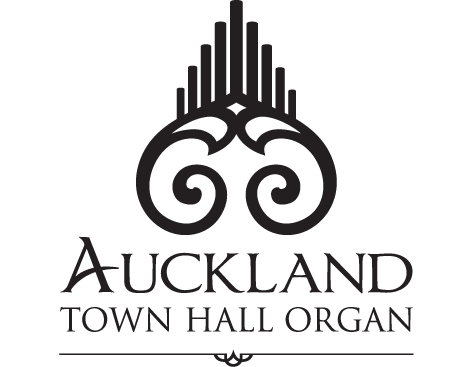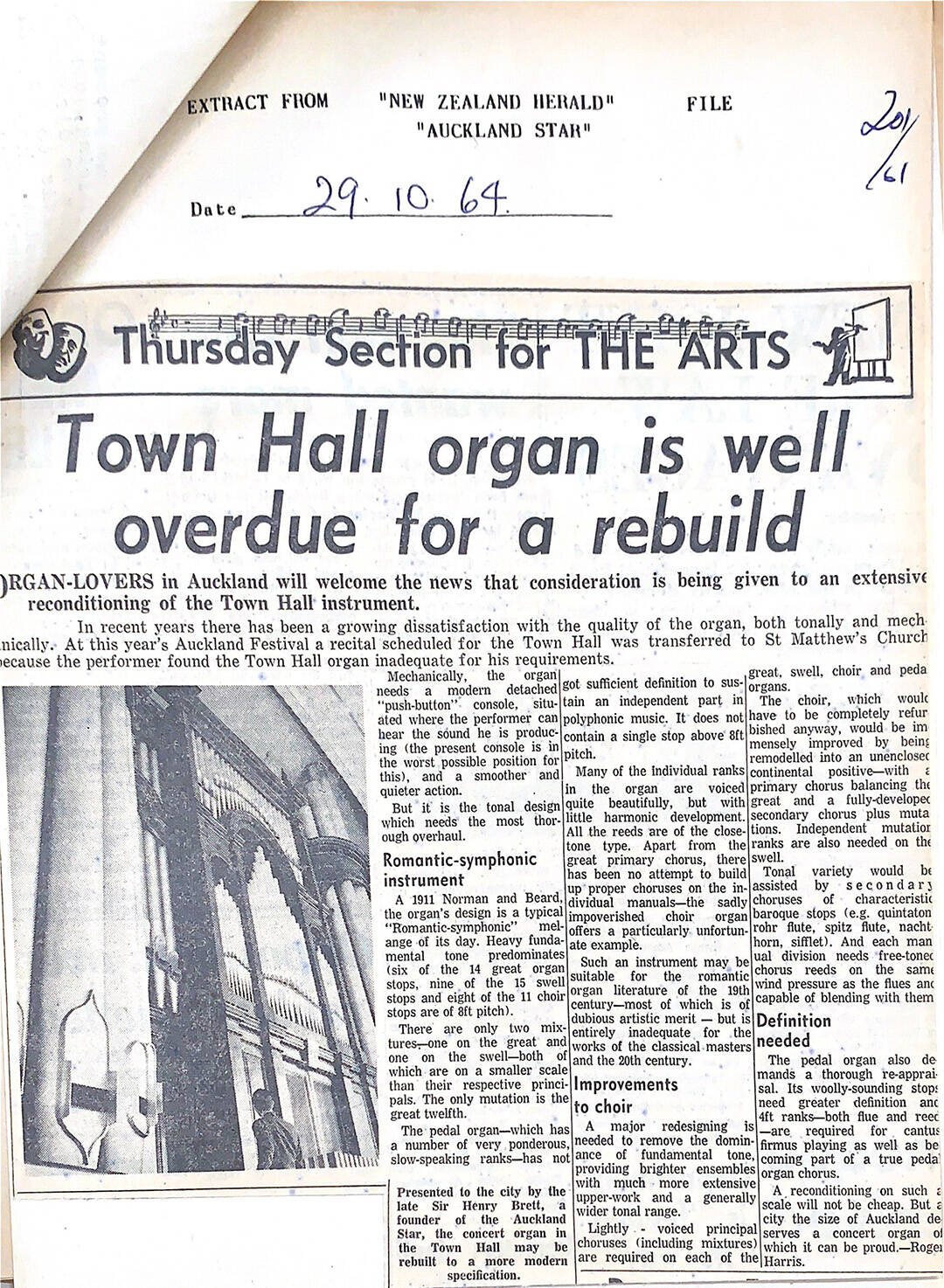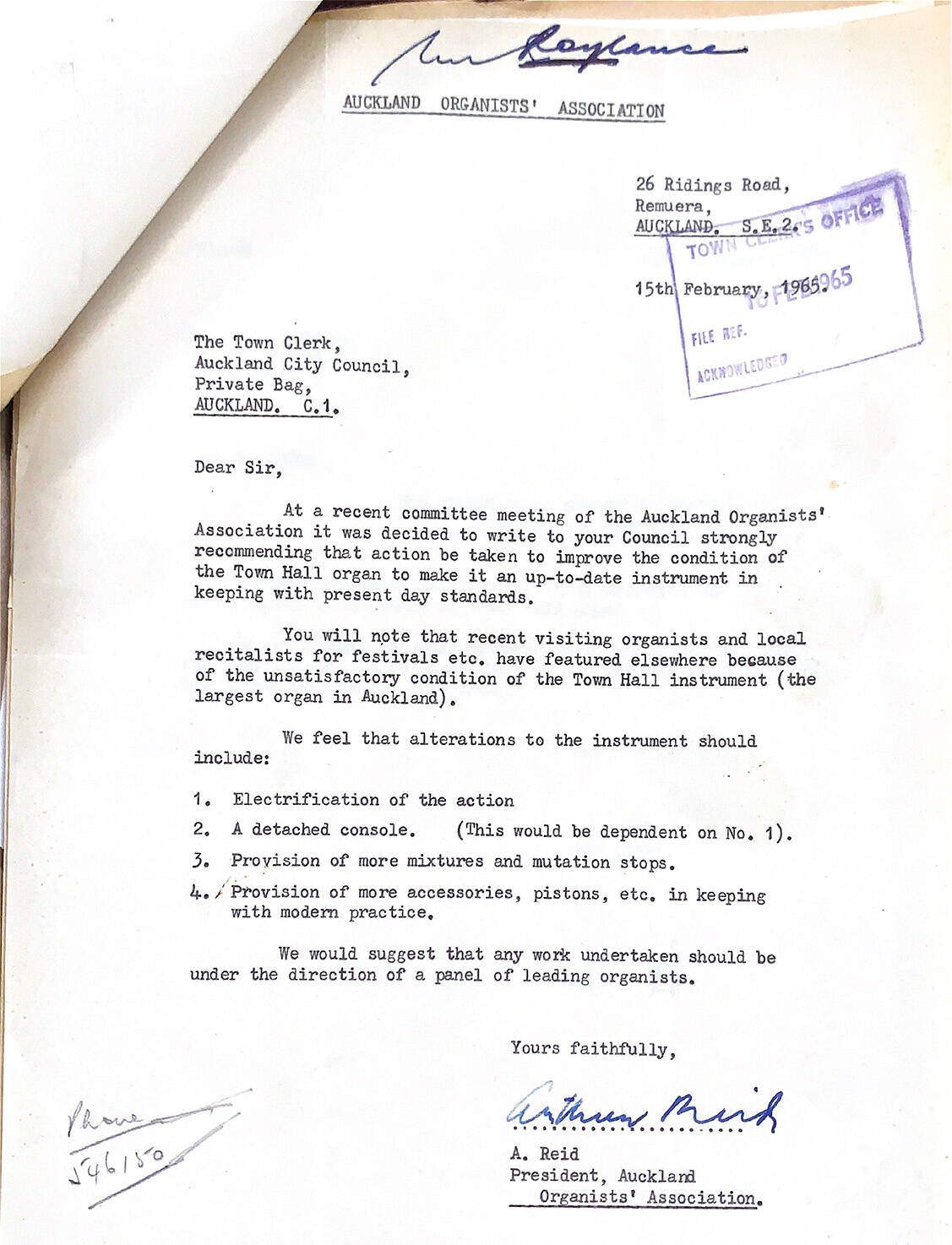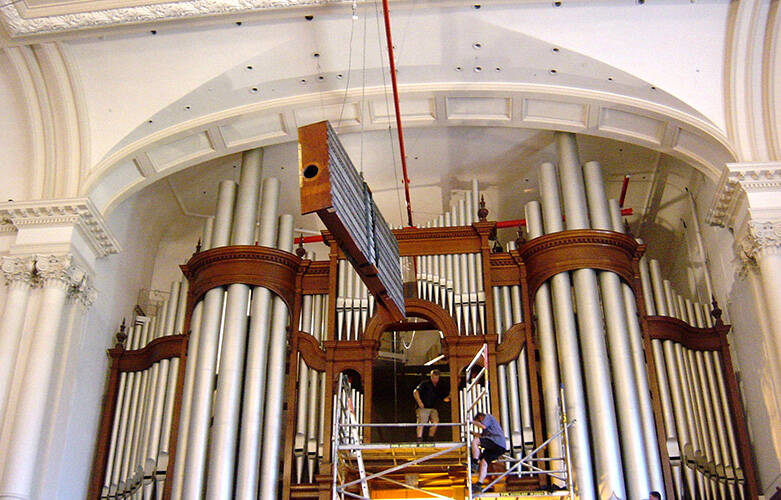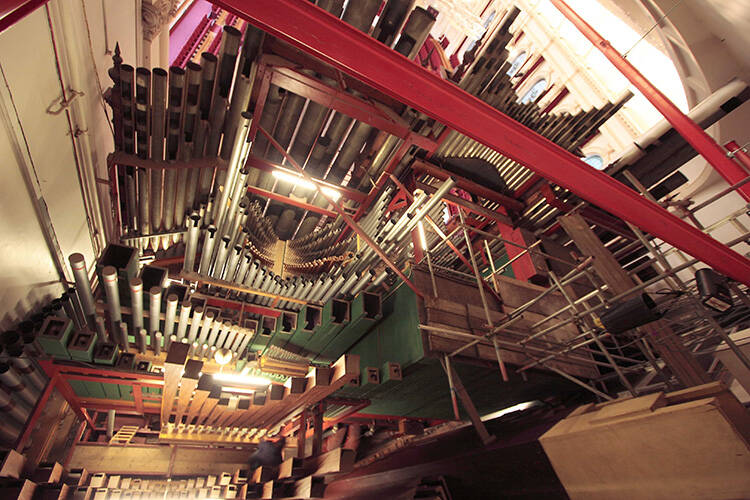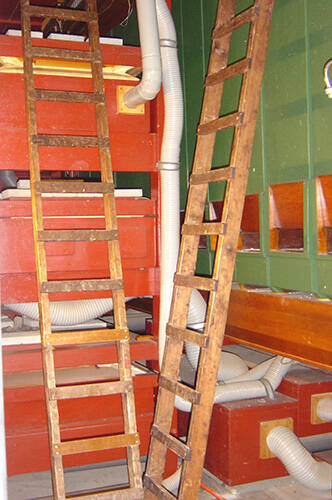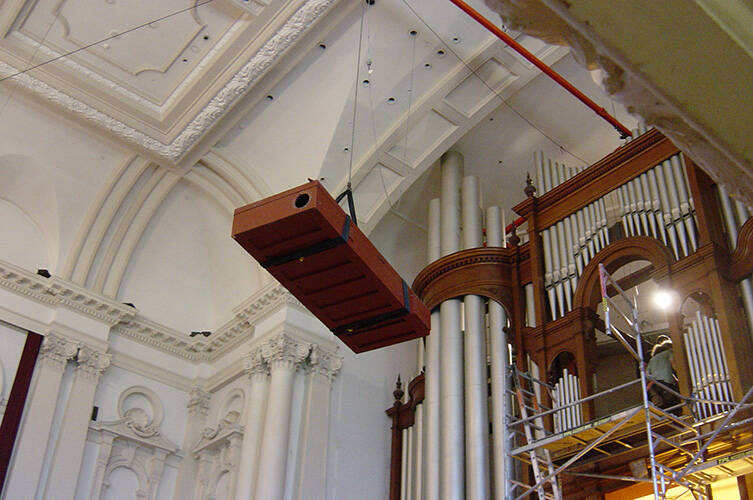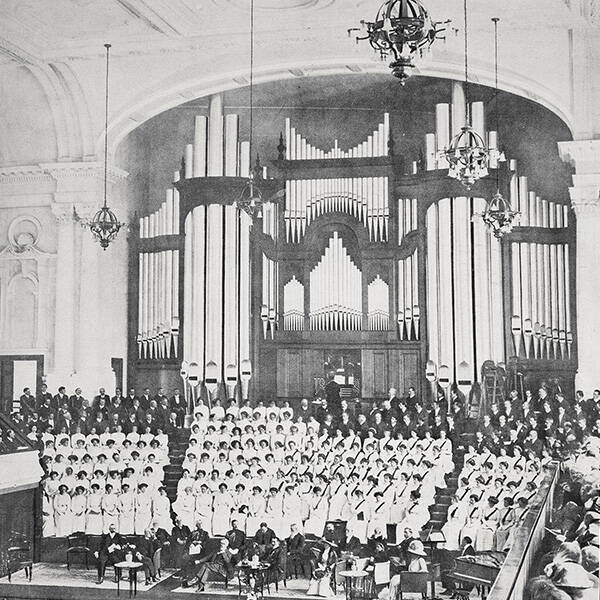
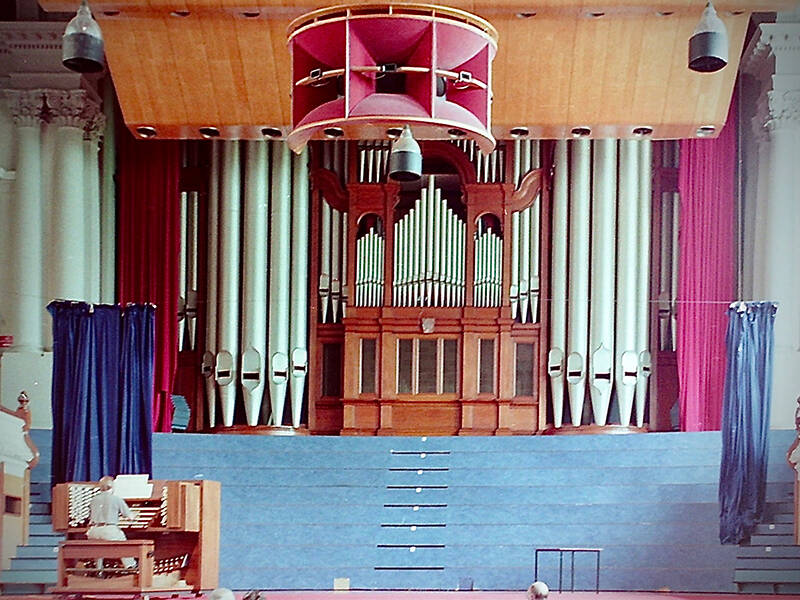
1970 Croft & Son
In 1970, the Edwardian organ fell victim to the worldwide organ reform movement.
This proclaimed that the real heart of the organ was in J S Bach’s Northern Europe. Polyphonic, not symphonic, was now the preferred style where clear, bright, neo-classical organs found favour over the romantic orchestral organs like the one in the Auckland Town Hall.
The 1911 instrument in the Auckland Town Hall, 1967, now obscured by curtains and the wooden acoustic reflector which were later removed in 1996 as part of the restoration of the Auckland Town Hall. | Auckland Libraries Heritage Collections 580-14975
In 1969, Auckland organ builders George Croft and Son were given the responsibility for the organ reconstruction and renovation. Under the new management of Kenneth Aplin, Crofts canvassed interested organists for their views. Kenneth Aplin says the resulting rebuild was a distillation of their ideas – a detached playing console being a unanimous request. The contract was duly signed with a price tag of $72,000 - the equivalent of $1.39 million in 2023.
Most of the organ’s pipes were replaced by 4000 new pipes made in Holland and Germany that conformed to the classical ideology. A few of the original Norman and Beard ranks were retained: the façade pipes, some of the larger pipes, and imitative ranks to broaden the tonal range.
The 1970 instrument represented a high point in New Zealand’s neo-classical organ world, and it was generally hailed as a success. A comment from one observer summed up the feeling of the majority: “Gone is the Auckland Town Hall organ with its massive sound. In its place has emerged an organ of classical design which should give listeners a completely different conception of the field of organ music”.
Organ Reform Movement – “Back to Bach”
In the early 1930s, a group of German scholars formed the Orgelbewegung (organ reform movement) which sought a return to the ideals of Bach’s time. They believed design had lost its way and had veered too far from its tradition. After the hiatus of the Second World War, the movement spread around the world. During the following 30 years most romantic organs were drastically altered, and internationally thousands of new organs were built on the Bach model.
